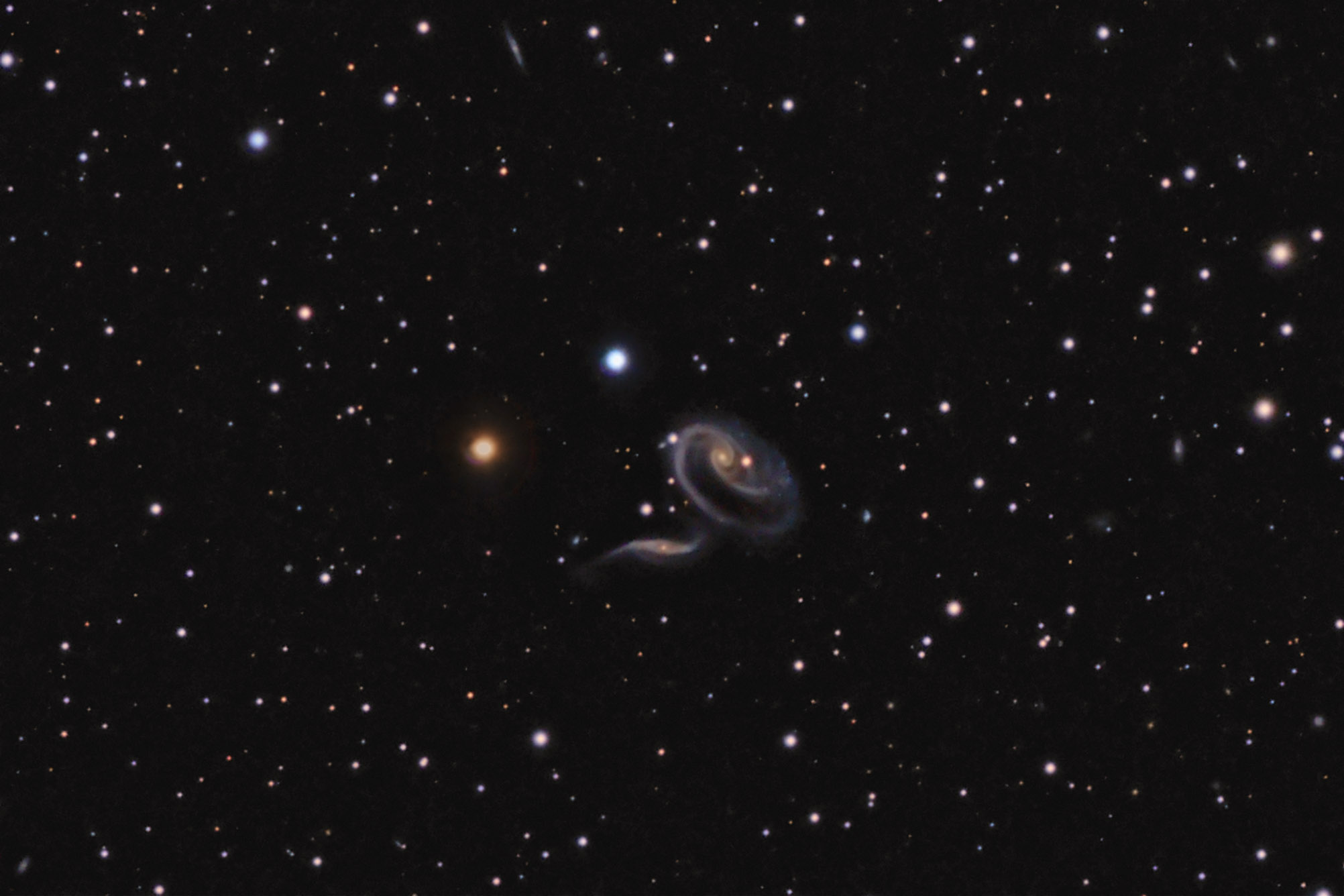| Description | Images |
Object name: ARP273Designation(s): ARP273, UGC1810, UGC1813, Arp 273 is a near collision in progress. The large galaxy is UGC 1810, the other spiral, UGC 1813. They are located about 330 million light-years away at the southeast corner of Andromeda. It's obvious that UGC 1810 is highly distorted. One arm looks more like Saturn's F ring than a spiral arm and seems to make a complete ring about the galaxy. It's hard to tell if NGC 1813 is distorted. It looks greatly distorted to me as the arms are almost straight but that is seen in other barred spirals. But it has faint a faint arm that curls back and runs along the arm while the ends of the bar, if it is a bar, seem to end differently. The left one ends in a faint blob while the right one seems to curve back from the arm of UGC 1810 as if repelled by it. Obviously, it isn't but sure gives that appearance. In any case, they curve very differently, likely due to the near collision. To appear so large at such a great distance these have to be two very large spiral galaxies. Indeed they are. I measure UGC 1810 as being 210,000 light-years in diameter. It is probably larger unless seen exactly face on. I measure NGC 1813 at 160,000 light-years including the long eastern plume. Related Designation(s):2MASS J02212871+3922321, 2MASS J02213257+3921243, 2MASX J02212870+3922326, 2MASX J02213261+3921246, 2MASXi J0221287+392231, 2MASXi J0221326+392124, 2MFGC 01826, ABELL 0347:[MWI88] 07, AKARI J0221324+392124, ARP 273, ARP 273 NED01, ARP 273 NED02, ARP 273:[MNP2009] C1, ARP 273:[MNP2009] RN, ARP273, CGCG 0218.4+3909, CGCG 0218.5+3908, CGCG 523-028, CGCG 523-029, CGPG 0218.4+3909, IRAS 02184+3907, IRAS F02184+3907, KPG 064, KPG 064A, KPG 064B, MCG +06-06-023, MCG +06-06-024, NVSS J022132+392131, PGC 008961, PGC 008970, Rose Galaxy, UGC 01810, UGC 01813, UGC1810, UGC1813, UZC J022128.6+392231, UZC J022132.7+392124, V Zw 223, VV 323, VV 323a, VV 323b, [RC1] A0218A, [RC1] A0218B, [RC2] A0218+39, [RC2] A0218+39A, [RC2] A0218+39B, |
